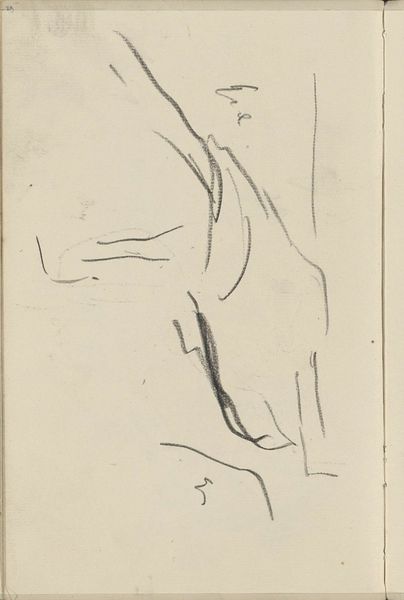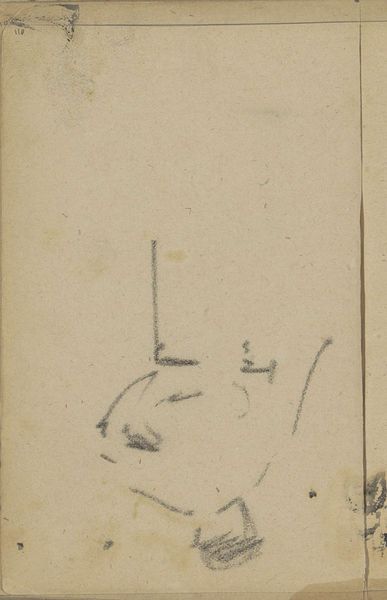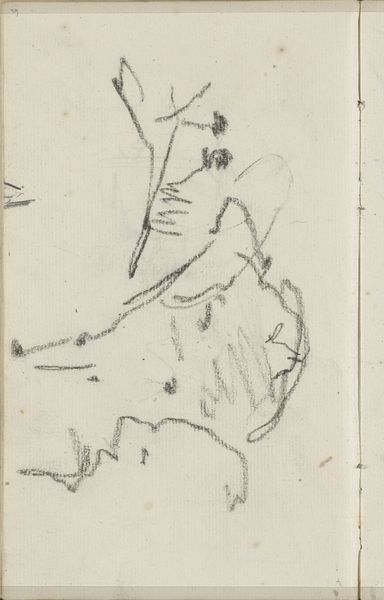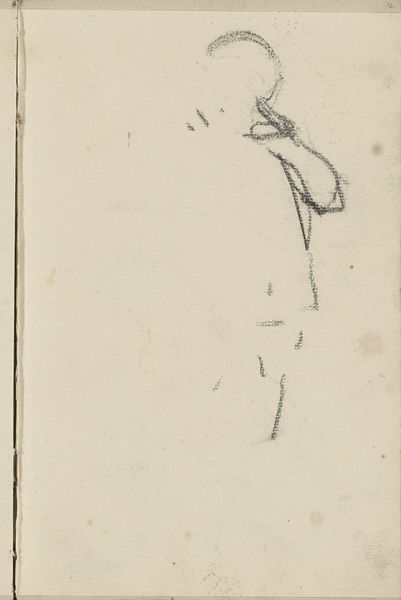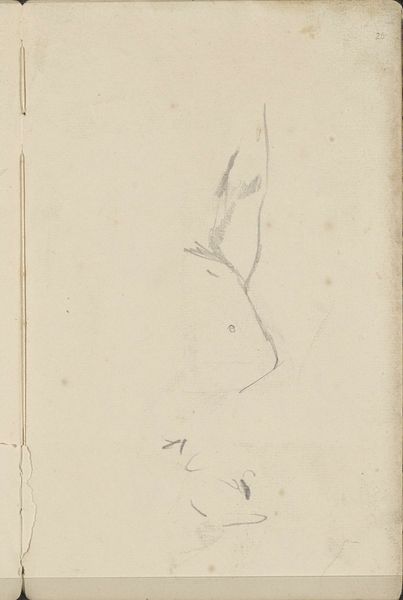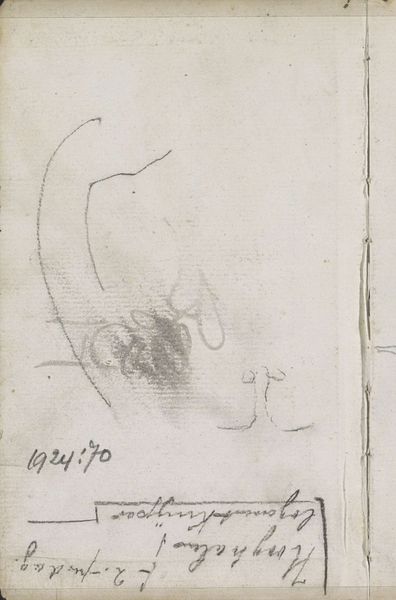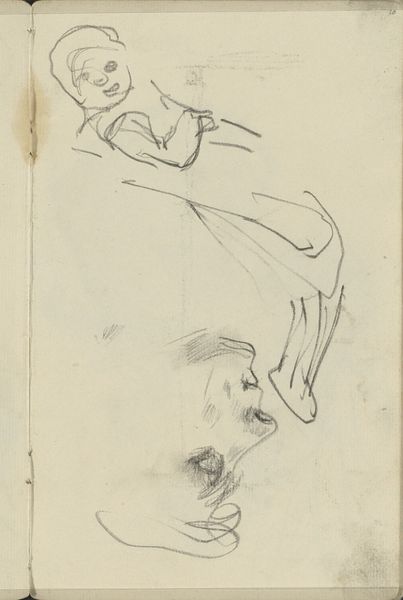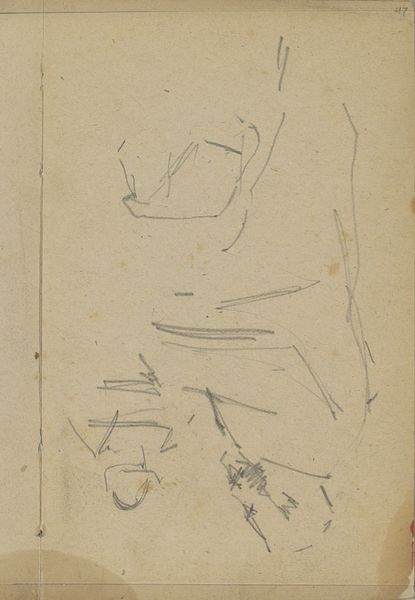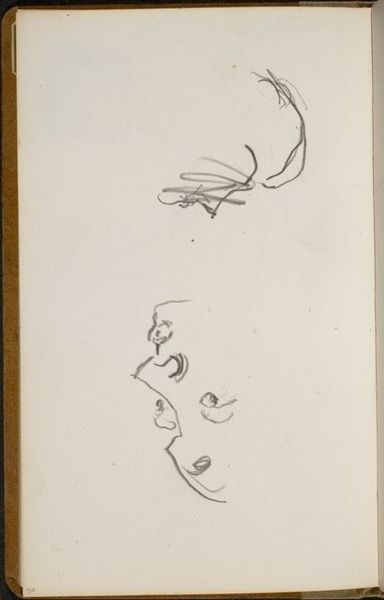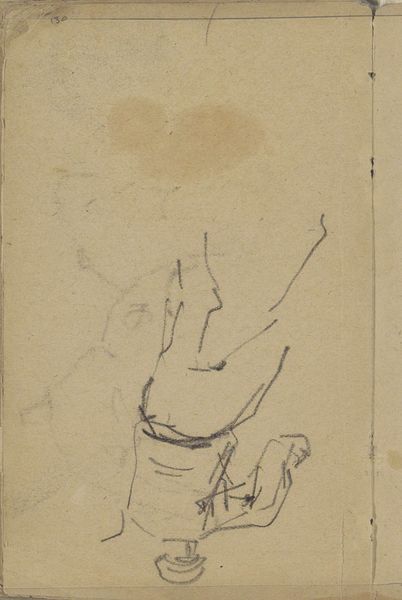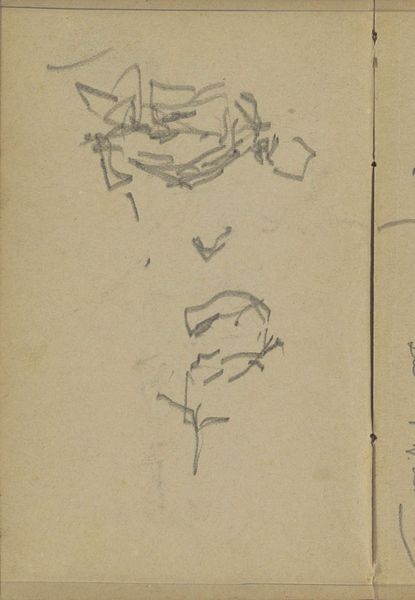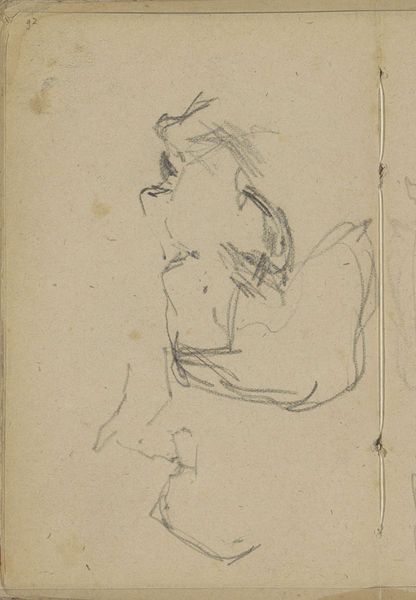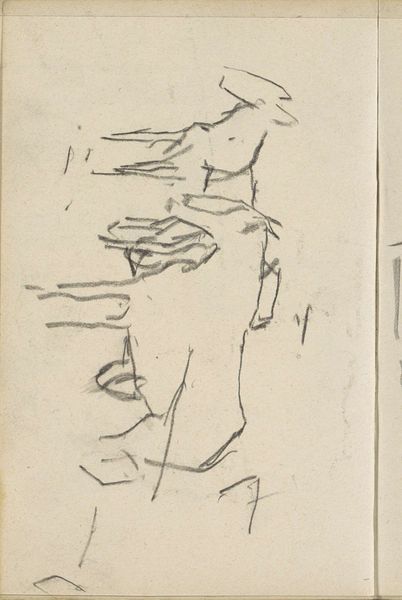
Copyright: Rijks Museum: Open Domain
Curator: Here we have a fascinating sketchbook page by George Hendrik Breitner, dating to 1893. The work, entitled 'Figuurstudies', presents several figure studies executed in charcoal on paper. Editor: There's an immediate sense of urgency and intimacy. It's like we’re catching a fleeting glimpse into Breitner’s private process. The rough lines give it raw, unrefined character, very vulnerable feeling. Curator: I agree, the sketch captures something visceral, and Breitner's positioning within Dutch Impressionism is crucial here. His keen interest in capturing modern urban life extends to his approach to the human figure. These sketches weren't simply exercises, but part of a wider project of documenting everyday life, which at the time centered heavily around issues of labor, class, and gender. Editor: The visual language is so potent. Those stark, dark charcoal marks evoke feelings of somber introspection, typical to what I feel represents the working class and working female form, for instance the rapid gestures almost make an attempt at representing fleeting moments in history, a constant need for attention, a sense of a hard future. It's like trying to grasp a shadow. Curator: Indeed. And within the intersectional history, the swiftness might reflect Breitner's awareness of the gazes, social constraints imposed upon those bodies and an empathy towards working class women. The visible date—"September 15th"—adds a poignant marker of temporality and specific location, possibly reminding us of a world not necessarily free from conflict. Editor: Looking at it now, the rough lines feel less like artistic imperfection, and more like a powerful act. The artist has presented to us a form of urgency in needing to present us with this. It creates an authentic experience for the viewer as you place your gaze within this frame. It becomes more meaningful within a period that sees its rise in a struggle between different forces, with women breaking the glass ceiling of male expectations, it becomes ever relevant in our current history too. Curator: Absolutely. The ‘Figuurstudies’ becomes more than just an artistic exercise; it's a portal into a specific historical, socio-economic moment, and an exploration into the experience of early modern women who challenged patriarchal control. Editor: The symbolic impact ripples outward through time, transforming it into something more meaningful and relevant. I see echoes of today’s ongoing struggles for equality.
Comments
No comments
Be the first to comment and join the conversation on the ultimate creative platform.
